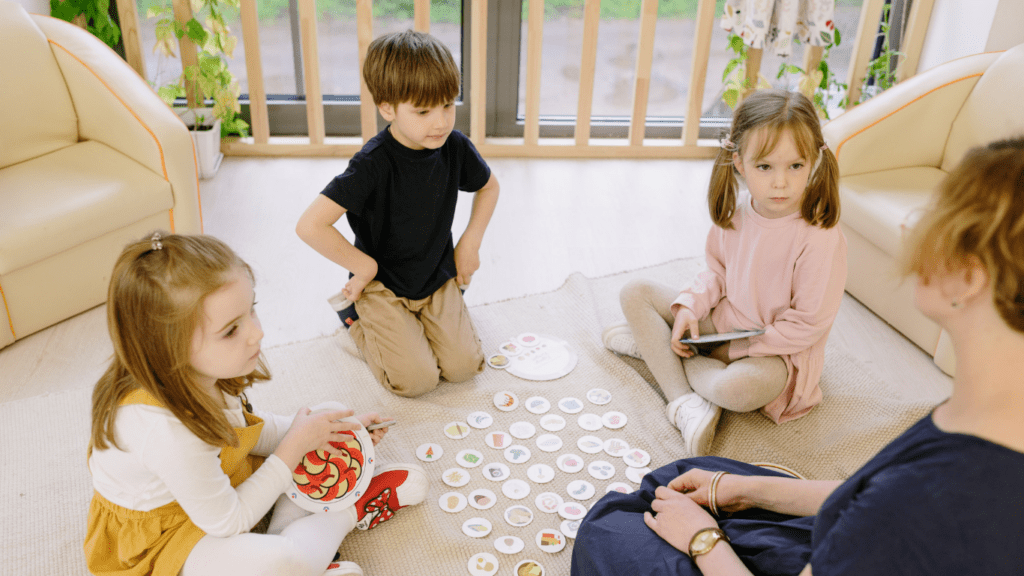The Evolution of Parenting Styles
Parenting styles have transformed significantly over the decades. In the early 20th century, many parents relied on authoritarian methods, which emphasized strict rules and severe consequences. Psychologist Diana Baumrind’s research in the 1960s identified three main parenting styles: authoritarian, permissive, and authoritative. Authoritarian parents imposed strict control, permissive ones allowed significant freedom, and authoritative parents balanced both approaches.
Shifts in Parenting Paradigms
In recent years, there has been a marked shift towards positive parenting. This evolution stems from research in child psychology and development. Dr. Jane Nelsen’s work on Positive Discipline emphasizes teaching kids responsibility and self-discipline instead of using punitive measures. Positive parenting focuses on respectful communication, empathy, and setting clear expectations.
Influences of Modern Research
Modern research has played a critical role in changing parental attitudes. Studies from institutions like the American Psychological Association reveal that punishment-based strategies may lead to negative outcomes such as increased aggression and lower self-esteem in children. Conversely, positive parenting strategies promote better emotional regulation and social competence.
Cultural and Societal Changes
Society’s evolving views on child-rearing also influence parenting styles. As societal norms change, there’s growing acknowledgment of children’s rights and emotional needs. This cultural shift has encouraged more supportive and nurturing parenting methods. Parents today often seek to develop a collaborative relationship with their children rather than maintaining a top-down authority.
Practical Implementation
Implementing positive parenting involves several key strategies. Parents often focus on active listening to understand their children’s perspectives. Consistent routines and clear, empathetic boundaries help children develop a sense of security and self-discipline. Encouraging open dialogue and validating children’s feelings also foster a supportive environment.
Benefits of Positive Parenting
Positive parenting yields numerous benefits. Children raised in nurturing environments exhibit higher self-esteem, better emotional health, and improved social skills. This approach strengthens the parent-child bond, promoting a cooperative dynamic that facilitates healthier family relationships.
Challenges and Misconceptions
Despite its many benefits, positive parenting faces challenges. Some parents may misinterpret it as leniency or a lack of discipline. However, it’s about setting firm, respectful boundaries without instilling fear. Overcoming these misconceptions involves proper education and support from parenting communities and experts.
The evolution of parenting continues as more parents embrace positive discipline, aligning their methods with contemporary research and societal changes. This shift exemplifies the ongoing journey towards a more empathetic and effective approach to raising children.
Understanding Positive Parenting
Positive parenting focuses on building a strong, respectful relationship between parent and child. It emphasizes communication, empathy, and guidance over punishment.
Core Principles of Positive Parenting
Positive parenting rests on several key principles:
- Respect: Treat children as individuals with their own feelings and thoughts. This builds trust and mutual respect.
- Empathy: Understand children’s perspectives and emotions. This helps in addressing their needs effectively.
- Consistency: Maintain clear, consistent rules and consequences. This provides a stable environment for children.
- Positive Reinforcement: Encourage good behavior through praise and rewards. This motivates children to continue those behaviors.
- Active Listening: Pay close attention to what children say and how they feel. This fosters open communication and understanding.
Benefits for Children and Families
Positive parenting offers numerous benefits:
- Emotional Regulation: Children learn to manage their emotions better, reducing tantrums and outbursts.
- Social Competence: Children develop better social skills, making them more adept at forming relationships.
- Self-Esteem: Praise and affirmation boost children’s self-confidence.
- Parent-Child Bond: The approach strengthens the relationship, leading to more meaningful interactions.
- Reduced Behavioral Problems: Consistent guidance and understanding reduce the likelihood of negative behaviors.
These benefits result in a healthier, more supportive family dynamic.
Comparing Traditional and Positive Discipline
The paradigm shift from traditional discipline to positive parenting reflects changing perspectives on effective child-rearing. Understanding the key differences clarifies why many parents embrace this modern approach.
Key Differences
Traditional Discipline
- Punitive Measures: Traditional discipline often relies on punishments like time-outs, spanking, and loss of privileges, aiming to correct misbehavior through consequences.
- Authority-Driven: Parents exercise control and authority, expecting immediate compliance without room for discussion.
- Fear-Based Motivation: Traditional methods use fear to ensure obedience, leading children to follow rules to avoid punishment.
Positive Discipline
- Learning Opportunities: Positive discipline uses misbehavior as a chance to teach problem-solving and self-regulation skills.
- Mutual Respect: Emphasis is on mutual respect, where both parent’s and child’s perspectives are considered.
- Empathy and Connection: Focuses on understanding the child’s feelings and reasons behind their behavior, promoting stronger emotional bonds.
Case Studies and Examples
Case Study: Family A
- Traditional Approach: Parents imposed strict curfews and punished deviations by grounding. Resulting conflict strained relationships and led to increased rebellious behavior.
- Positive Approach: The shift involved setting agreed-upon curfews and discussing consequences empathetically. Children felt heard, leading to cooperative behavior and a harmonious home environment.
- Traditional Method: A child throwing a tantrum might be sent to their room alone, reinforcing isolation and misunderstanding.
- Positive Method: The parent kneels to the child’s level, validates their feelings, and offers comfort, teaching emotional regulation and effective communication.
By comparing these methods through real-world examples, my perspective highlights why positive discipline offers a more supportive and effective parenting framework.
Implementing Positive Parenting Strategies

Positive parenting strategies create a nurturing environment for children, emphasizing empathy, respect, and clear communication.
Effective Communication Techniques
Effective communication is vital in positive parenting. Open-ended questions encourage discussions, such as “How did that make you feel?” This approach builds trust and helps children express themselves. Active listening, which involves paraphrasing what the child says to show understanding, strengthens the parent-child connection. For example, if a child says, “I’m upset because my friend left me out,” responding with, “It sounds like you’re hurt because you felt excluded,” validates their feelings.
Nonverbal cues, like eye contact and assuring nods, enhance verbal communication. Use positive reinforcement to acknowledge good behavior. Phrases like “I noticed you helped your sibling today; that was kind,” foster a supportive atmosphere. Implementing clear, simple language, free from complex vocabulary, ensures children understand instructions and expectations. Avoiding negative language, such as “don’t” and “stop,” in favor of positive directions, like “please walk” instead of “don’t run,” guides children effectively.
Setting Boundaries with Empathy
Setting boundaries with empathy blends firmness with compassion. Establish clear, consistent rules and explain the reasons behind them. For instance, saying “We need to hold hands when crossing the street to stay safe,” provides context and understanding. Consistency in enforcing boundaries helps children learn the importance of rules.
Offer choices within limits to give children a sense of control. An example is, “Do you want to brush your teeth before or after you put on pajamas?” This method respects their autonomy while maintaining necessary routines. Acknowledge children’s feelings when enforcing boundaries. If a child resists bedtime, expressing empathy like, “I know you’d rather stay up, but sleep is important for your health,” shows understanding while maintaining the rule.
Use natural consequences instead of punitive measures to teach lessons. For example, if a child refuses to wear a coat, they might feel cold, learning the importance of dressing appropriately. Avoid harsh punishments that can damage self-esteem and the parent-child relationship.
Implementing empathetic boundaries and effective communication fosters a respectful, trusting, and supportive family environment.
Common Challenges and Solutions
Navigating positive parenting presents unique challenges. Understanding these challenges helps parents effectively implement new strategies.
Addressing Misbehavior
Misbehavior presents a significant challenge in positive parenting. Parents often struggle with how to address it without resorting to punitive measures. I find it effective to focus on understanding the root cause of the behavior. Children often misbehave when they’re tired, hungry, or seeking attention. Identifying these triggers helps address the root cause, rather than just the symptoms.
Redirection is another effective strategy. Instead of focusing on what the child did wrong, I guide them towards a more acceptable behavior. For instance, if a child is drawing on the walls, providing paper and praising their creativity shifts the focus. Positive reinforcement, like offering praise for good behavior, encourages children to repeat those actions.
Dealing with Resistance from Children
Resistance to positive parenting methods can be a common challenge. Children used to traditional discipline methods might initially test new boundaries. Consistency is crucial. Sticking to established rules, even when met with resistance, reinforces their importance.
Empathy plays a key role in mitigating resistance. Acknowledging children’s feelings and explaining the reasoning behind rules makes them more willing to comply. Offering choices within set boundaries also empowers children and reduces their resistance. For example, allowing a child to choose between two acceptable options fosters a sense of control and cooperation. This approach aligns with positive parenting principles and strengthens the parent-child relationship.
Expert Opinions and Research
Various studies and expert opinions have highlighted the benefits of positive parenting, showing significant improvements in children’s behavior and emotional well-being.
Studies on Positive Parenting Outcomes
Research consistently shows positive effects of this parenting approach. A 2014 study in the Journal of Child and Family Studies found that children raised with positive parenting exhibit better emotional regulation and social competence. Additionally, a 2016 meta-analysis by the American Psychological Association revealed that these children had higher self-esteem and fewer behavioral problems compared to those subjected to punitive measures.
The Journal of Clinical Child & Adolescent Psychology in 2018 published findings that positive reinforcement and empathetic communication significantly reduce instances of high-risk behaviors in adolescents. Furthermore, a longitudinal study by the National Institute of Child Health and Human Development in 2020 demonstrated that positive parenting practices correlate with higher academic achievement and lower rates of depression in teenagers.
Perspectives from Parenting Experts
Parenting experts echo these research findings, emphasizing the efficacy of positive discipline practices. Dr. Jane Nelsen, an advocate for Positive Discipline, asserts that teaching responsibility and self-discipline can be achieved without harsh punishments. According to Dr. Nelsen, these methods encourage mutual respect and understanding, which are crucial for a healthy parent-child relationship.
Dr. Laura Markham, a clinical psychologist and writer, supports the view that empathetic boundaries and active listening are key elements in fostering a supportive family environment. Dr. Markham’s work highlights that understanding the root causes of misbehavior and using positive reinforcement help create a cooperative dynamic between parents and children.
Dr. Ross Greene, a clinical child psychologist, offers insights into the importance of collaborative problem-solving. Dr. Greene’s model, Collaborative & Proactive Solutions, promotes involving children in setting guidelines and expectations, resulting in improved cooperation and reduced oppositional behavior.
These expert perspectives, buttressed by extensive research, validate the shift towards positive parenting, reinforcing the importance of empathy, consistency, and mutual respect in effective child-rearing.



 Jameslee Silverayees – Founder Jameslee Silverayees is the founder and driving force behind Makes Parenting Watch, a comprehensive platform designed to support parents at every stage of their journey. As a parent himself, Jameslee recognized the overwhelming amount of information available and the need for a trusted source that offers practical, expert-backed advice. Drawing on his own experiences and his passion for family well-being, he created Makes Parenting Watch to be a one-stop resource for news, updates, and tips on everything from newborn care to family travel. Under his leadership, the website has grown into a highly respected community of parents, caregivers, and experts who come together to share insights and solutions. Jameslee is deeply committed to empowering families with the knowledge they need to raise healthy, happy children while fostering stronger family bonds.
Jameslee Silverayees – Founder Jameslee Silverayees is the founder and driving force behind Makes Parenting Watch, a comprehensive platform designed to support parents at every stage of their journey. As a parent himself, Jameslee recognized the overwhelming amount of information available and the need for a trusted source that offers practical, expert-backed advice. Drawing on his own experiences and his passion for family well-being, he created Makes Parenting Watch to be a one-stop resource for news, updates, and tips on everything from newborn care to family travel. Under his leadership, the website has grown into a highly respected community of parents, caregivers, and experts who come together to share insights and solutions. Jameslee is deeply committed to empowering families with the knowledge they need to raise healthy, happy children while fostering stronger family bonds.
